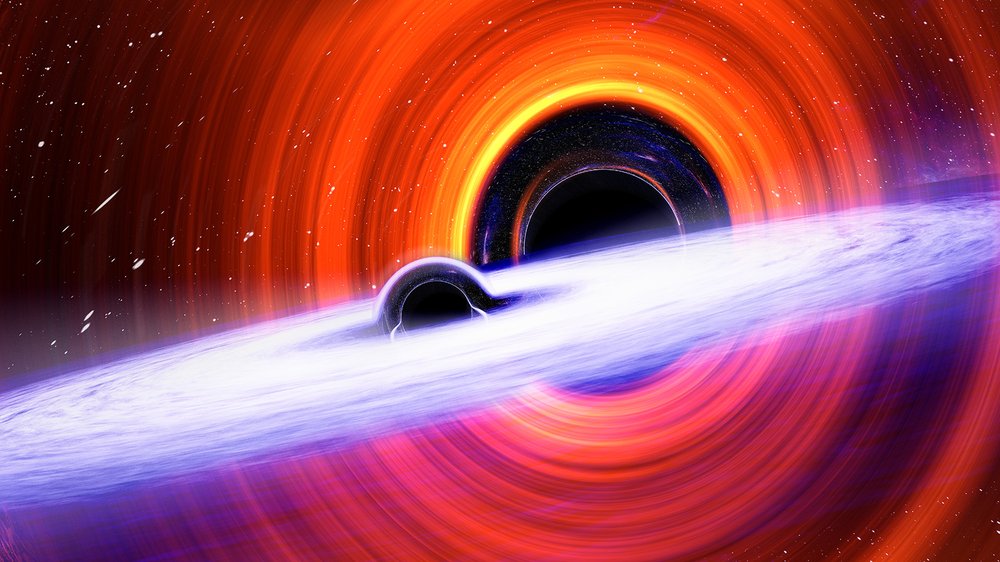A pair of distant black hole mergers, measured just one month apart in late 2024, are improving how scientists understand the nature and evolution of the most violent deep-space collisions in our universe. The new observations suggest that the colliding black holes might themselves have been products of earlier cosmic smashups.
In a new paper published October 28 in The Astrophysical Journal Letters, the international LIGO-Virgo-KAGRA Collaboration reports on the detection of two gravitational wave events in October and November of last year with unusual black hole spins. Gravitational waves are ripples in space-time that result from cataclysmic events in deep space, with the strongest waves produced by the collision of black holes.
The first merger detected in the recent duo, GW241011 (October 11, 2024), occurred roughly 700 million light-years away and resulted from the collision of two black holes, one weighing in at around 20 times the mass of our Sun and the other six times the mass. The larger of the black holes in GW241011 was measured to be one of the fastest rotating black holes observed to date.
Almost one month later, GW241110 (November 10, 2024) was detected around 2.4 billion light-years away and involved the merger of black holes roughly 17 and eight times the mass of our Sun. While most observed black holes spin in the same direction as their orbit, the primary black hole of GW241110 was noted to be spinning in a direction opposite its orbit-a first of its kind.
Caltech's Joe Giaime, head of the LIGO Livingston Observatory, says recent improvements to LIGO's detectors resulted in precise measurements of the signals from the two mergers, allowing for the kind of subtle observations that were needed for studies of GW241011 and GW241110. "Better sensitivity not only allows LIGO to detect many more signals but permits deeper understanding of the ones we detect," he says.
LIGO-Virgo-KAGRA scientists say that GW241011 and GW241110 are intriguing for multiple reasons. "With both events having one black hole that is both significantly more massive than the other and rapidly spinning, they provide tantalizing evidence that these black holes were formed from previous black hole mergers," says Stephen Fairhurst, professor at Cardiff University and spokesperson for the LIGO Scientific Collaboration.
Scientists point to certain clues, including the size differential between the black holes in each merger-the larger was nearly double the size of the smaller-and the spin orientations of the larger of the black holes in each event. A natural explanation for these peculiarities is that the black holes are the result of earlier coalescences. This process, called a hierarchical merger, suggests that these systems formed in dense environments, in regions like star clusters, where black holes are more likely to run into each other and merge again and again.
 Zoom In to Image
Zoom In to Image Another artist's concept of a black hole merger. Credit: Carl Knox, OzGrav, Swinburne University of Technology
Data collected from the mergers also validates, with unprecedented accuracy, fundamental laws of physics that were predicted more than 100 years ago by Albert Einstein and furthers the search for new and still unknown elementary particles with the potential to extract energy from black holes.
The paper is titled " GW241011 and GW241110: Exploring Binary Formation and Fundamental Physics with Asymmetric, High-Spin Black Hole Coalescences ." LIGO is funded by the National Science Foundation (NSF) and is operated by Caltech and MIT, which conceived and built the project. Financial support for the Advanced LIGO project was led by NSF with Germany (Max Planck Society), the UK (Science and Technology Facilities Council) and Australia (Australian Research Council) making significant commitments and contributions to the project. More than 1,600 scientists from around the world participate in the effort through the LIGO Scientific Collaboration, which includes the GEO Collaboration.






